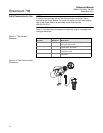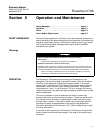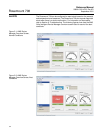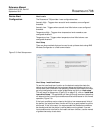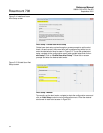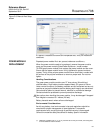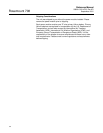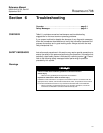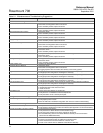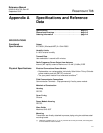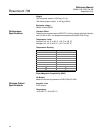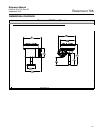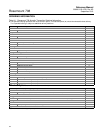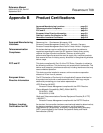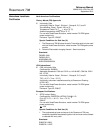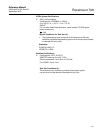
Reference Manual
00809-0100-4708, Rev AD
September 2012
Rosemount 708
6-2
Table 6-1. Maintenance and Troubleshooting Suggestions
Symptom Corrective Actions
Device Troubleshooting
Electronics Failure 1. Reset the device.
2. Reconfirm all configuration items in the device.
3. If the condition persists, replace the device.
Acoustics Failure 1. Reset the device.
2. If the condition persists, replace the device.
WaveguideTemperature Failure 1. Reset the device.
2. If the condition persists, replace the device.
Radio Failure 1. Reset the device.
2. If the condition persists, replace the device.
Supply Voltage Failure 1. Replace the Power Module.
2. If the condition persists, replace the device.
Electronics Warning 1. Reset the device.
2. Reconfirm all configuration items in the device.
3. If the condition persists, replace the device.
Acoustics exceeded the limits 1. Check process for possible saturation condition.
2. Reset the device.
3. If the condition persists, replace the device.
Electronics Temperature exceeded the limits 1. Verify ambient temperature is within the transmitter’s range.
2. Reset the device.
3. If the condition persists, replace the device.
Waveguide Temperature exceeded the limits 1. Verify process temperature is within the transmitter’s range.
2. Reset the device.
3. If the condition persists, replace the device.
Supply Voltage Low 1. Replace the Power Module.
Database Memory Warning 1. Reset the device.
2. Reconfirm all configuration items in the device.
3. If logging dynamic data not needed, this advisory can be safely ignored.
High Acoustic Level 1. Verify process conditions. Correct if they are outside of normal operating conditions.
2. Verify proper alert configuration. Reconfigure if necessary.
Low Acoustic Level 1. Verify process conditions. Correct if they are outside of normal operating conditions.
2. Verify proper alert configuration. Reconfigure if necessary.
High Temperature Level 1. Verify process conditions. Correct if they are outside of normal operating conditions.
2. Verify proper alert configuration. Reconfigure if necessary.
Low Temperature Level 1. Verify process conditions. Correct if they are outside of normal operating conditions.
2. Verify proper alert configuration. Reconfigure if necessary.
Simulation Active 1. Verify that simulation is no longer required.
2. Disable Simulation mode in Service Tools.
3. Reset the device.
Short Battery Life 1. Check that "Power Always On" mode is off .
2. Verify device is not installed in extreme temperatures.
3. Verify that device is not a network pinch point.
Configuration Troubleshooting
Cannot configure the device with 375 or AMS 1. Power cycle the device.
2. Verify/replace power module.
3. Refer to AMS and/or handheld configuration tool manual for further troubleshooting.
Wireless Troubleshooting
Poor wireless connectivity 1. Verify device oriented for optimal connections (See Section 1 of this document).
2. Verify wireless network best practices are followed (See Appendix C for more information).
Acoustic Transmitter not joining network 1. Verify the device has power.
2. Verify the device is within effective communications range.
3. Verify the proper Network ID has been entered into the device.
4. See troubleshooting section of the Smart Wireless Gateway for more information
(Document No. 00808-0200-4420).
Limited Bandwidth Error 1. Use the slowest acceptable update Rate.
2. Increase communication paths by adding more wireless points.
3. Check that the device has been online for at least an hour.
4. Create a new network with an additional Smart Wireless Gateway.



